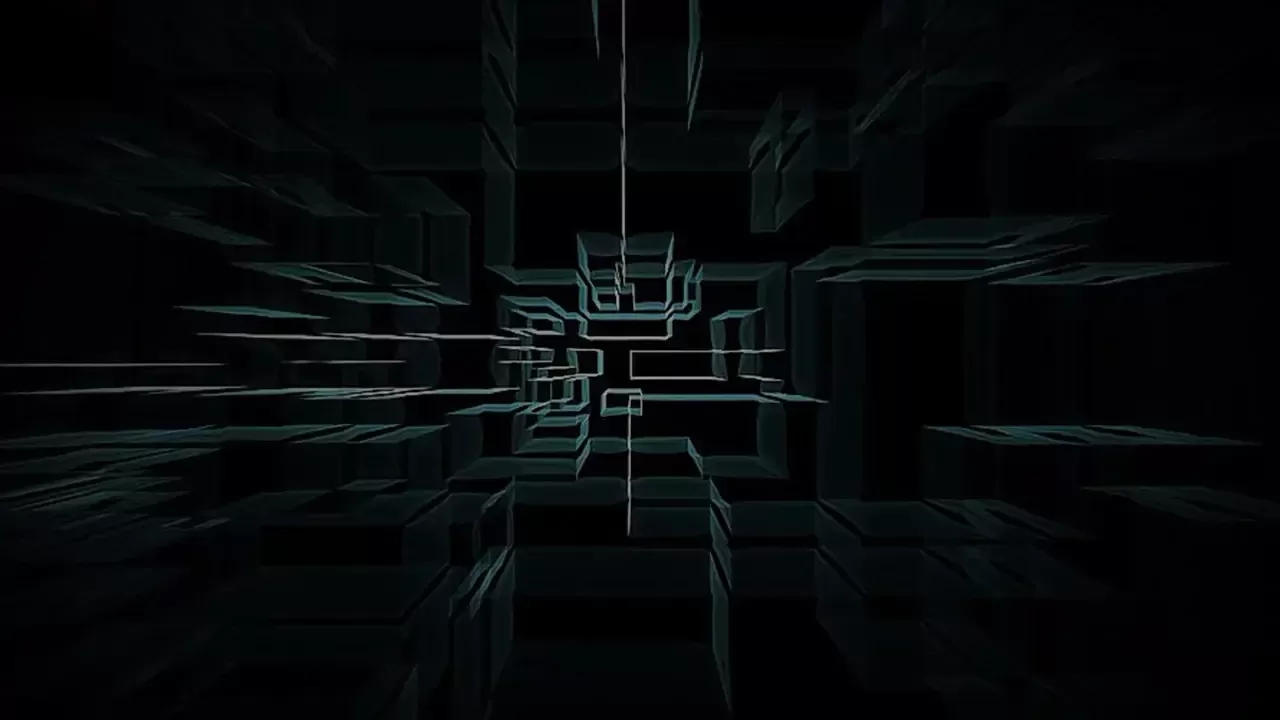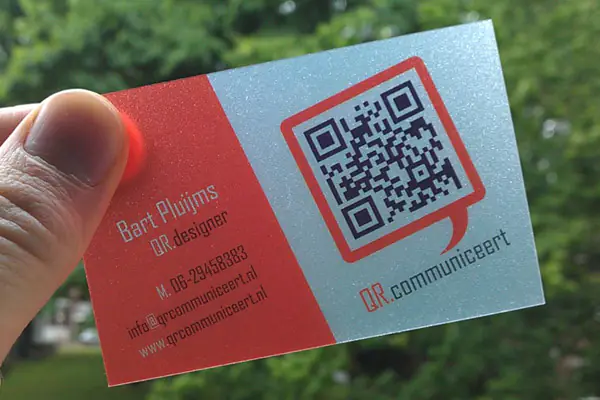
The Evolution of Barcodes: A New Dimension
As the Information Age progressed, and the onset of the digital revolution set in, the barcode evolved. The evolution was due, in part, to the need for high-speed component scanning in the automotive industry to track vehicles during manufacture. A new class of barcodes emerged with the ability to store large amounts of information in a relatively small space. Enter the “Two-dimensional” or ‘2D’ barcode.
What caused the paradigm shift from 1D to 2D barcodes?
The standard 1D barcode is only able to hold as much information as the printed label allowed; the more information is encoded in a 1D barcode, the larger it must be displayed. 2D barcodes cleverly circumvent this problem. 2D barcodes are able to contain a much larger amount of information in a comparably smaller space. This allows for significantly more complex messages to be encoded, without sacrificing printed area. 2D barcodes allow the use of rectangles, dots, hexagons, and other geometric patterns and can contain hundreds of times the amount of information as 1D barcodes.
There was, unfortunately, one sizable drawback. The traditional scanner designed for 1D barcodes would not scan 2D barcodes. The traditional scanners were only designed to look for recognizable black and white stripes. While 2D scanners could be designed to work using a technology similar to 1D (bouncing lasers off the code and distinguishing patterns based on the light that returns), 2D scanners would be most effective with a new technology: technology found in image recognition research.
Image recognition relies on identifying telltale patterns of the 2D code by looking at a digital image of the code itself. The device takes a picture, or monitors a series of pictures, locates the barcode, and then distinguishes the code by interpreting the patterns of the barcode. This “digital image scanner” is superior to the traditional scanner in several ways: it can be read from any direction; and, it allows any device with a camera to essentially double as a 2D barcode scanner, namely, the colossal market of smartphones.
Smartphones and Barcodes: A Perfect Match
Smartphones and their camera technology have allowed for the explosive expansion of 2D barcodes. When 1D barcode technology was on the edge of dominating growth, the main obstacle preventing this was the expense of the equipment. Smaller stores couldn't hope to acquire even one barcode system; fully outfitting a large department store was intimidating even for powerful companies. This problem was entirely eluded by the mass of smartphones swarming the market. Smartphones made 2D barcode scanners accessible and easy to use for almost anyone.
Barcode technology accessible to almost anyone anywhere completely changed the landscape as to what barcodes could be applied. Companies all over the world that previously had not considered working with any type of barcode technology started looking at this new advancement, especially for one primary use case… marketing. The Quick Response Code, or QR Code, provided the programming flexibility and ease of use to scan these barcodes, allowing companies to connect their web content to the printed collateral in the form of barcodes. Anyone who scanned the barcode could be immediately redirected to any web page the company had linked.

Jeep’s 2012 ad featuring a QR code, a type of 2D barcode
A New Game: Marketing From Anywhere
Initially developed, patented, and owned by Toyota subsidiary Denso Wave for automotive parts management, QR Code is now in the public domain. The QR Code has become nearly commonplace in consumer marketing due to its ability to store a URL and direct consumers to a brand website with a single scan, offering product loyalty rewards, coupons, and other incentives in exchange for gathering analytics. The QR Code is seductive to consumers looking for product knowledge. In addition to consumer marketing, the QR Code is utilized for product and time tracking, item identification, and document management. When companies discovered the power of barcodes in marketing, their popularity grew drastically. QR Codes quickly became a staple of the entire barcode industry.
The accessibility of barcode scanners through smartphones, paired with the ability of 2D barcodes to store large amounts of information in small spaces, has opened up an entire market centered on advertisement through 2D barcodes. 2D barcodes are being seen on billboards on the side of highways, with the codes being several feet high, to allow scanning from inside a car, or on business cards, which link to the owner’s personal website.

This QR code could, for example, direct to your résumé online.
Tools to create and scan 2D barcodes rapidly became free to use or download, making it possible for anyone to make a 2D barcode, driving their use even further. Even the smallest businesses were able to create marketing campaigns using this technology.
Uses Beyond Limit
The first 2D barcode was developed in 1987 by David Allais at Intermed Corporation and was called Code 49. While QR Code was the first commercially adopted 2D barcode, it didn't take long for additional types to be developed. In the late 1980s, a new 2D barcode emerged. Data Matrix has become widely adopted in the areas of tracking and traceability. Due to its compact size, high readability, and reliability, Data Matrix is ideal for logistics. The United States of America's Electronic Industries Alliance (EIA) recommends using Data Matrix for labeling small electronic components, and the US Department of Defense has selected Data Matrix for the mandatory item unique identification (IUID) of equipment. Items must be permanently identified with a unique Data Matrix code in accordance with Military Standard 130 for asset tracking. Additionally, the International Air Transport Association (IATA) plans to utilize Data Matrix on all new aircraft.
2D barcodes have also found their way into more conventional uses. Hospitals, for example, use barcodes to keep patient information on hand, to label equipment, or to keep track of information for transplants and blood transfusions. This aids in patient safety and keeps hospitals efficient and current. In the clinical setting, Data Matrix has been utilized in pharmaceutical and specimen traceability, as well as the labeling of surgical equipment.
In 1991, Portable Data File 417 (PDF417) was developed by Symbol. This 2D barcode is one of the few two-dimensional barcodes that can be read by laser scanners. Since its advent, PDF417 has become the standard government identification symbology, selected by the Department of Homeland Security as the machine-readable zone technology for RealID-compliant driver licenses and state-issued identification cards. In the US, most Departments of Motor Vehicles have adopted the American Association of Motor Vehicle Administrators (AAMVA) standard for driver’s licenses and identification cards, which includes a standardized PDF417 barcode that can be scanned and processed by any compliant State.
PDF417 is also utilized by the airline industry's Bar Coded Boarding Pass standard (BCBP) as the barcode symbolism for paper boarding passes. In shipping, FedEx uses PDF417 on its shipping labels for package delivery information, and PDF417 can be used to print postage for the US Postal Service.
In 1997, the Association for Automatic Identification and Mobility (AIM) published another 2D barcode, Aztec Code. Aztec Code has great encoding capabilities and is mainly used in the transportation industry, on electronic traveling tickets or boarding passes. In Poland, registration documents of the vehicles have Aztec Code inscribed on them which contains a summary of the vehicle’s information.
Many other 2D barcodes have been developed and are in use. The main advantages of utilizing a 2D barcode include the ability to store more information in more compact spaces; fewer reading errors; the ability to encrypt contents; and the ability to be read with a camera.
The uses for 2D barcodes are only limited to the creator’s ingenuity. 2D barcodes have been known to have surprisingly unique uses when scanned, such as sending an email, dialing a phone number, downloading contact information, or opening a location in the smartphone’s map service, such as Google Maps. 2D barcodes are incredibly versatile, helping to bridge the offline into the online.
In the final part of the “Evolution of Barcodes” series, the future of the technology will be discussed.
If you missed Part 1, check out "The Evolution of Barcodes".


